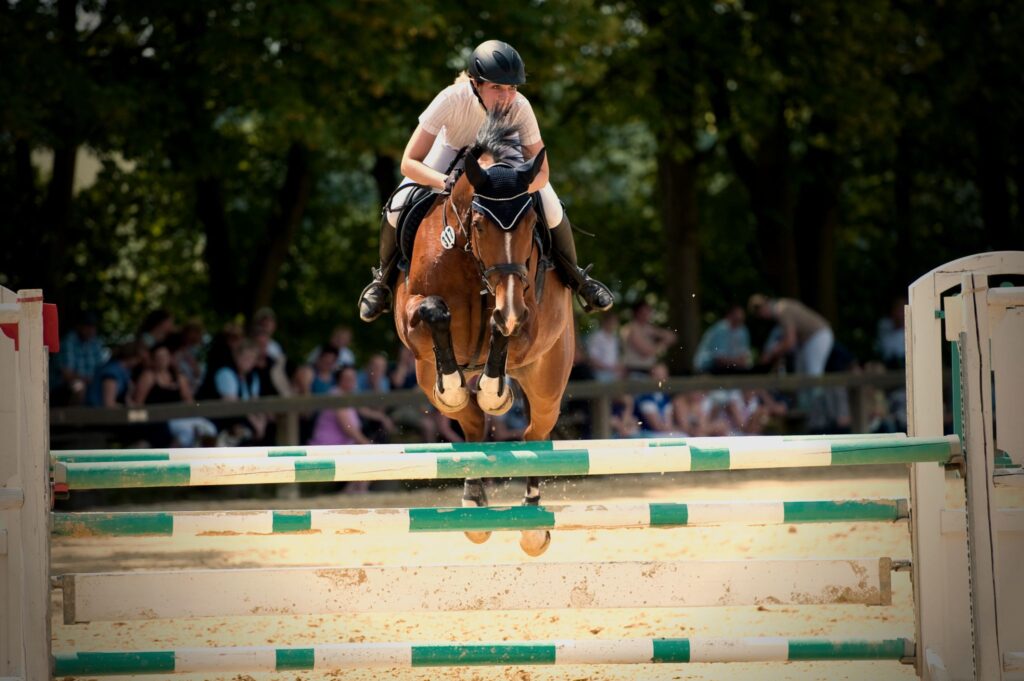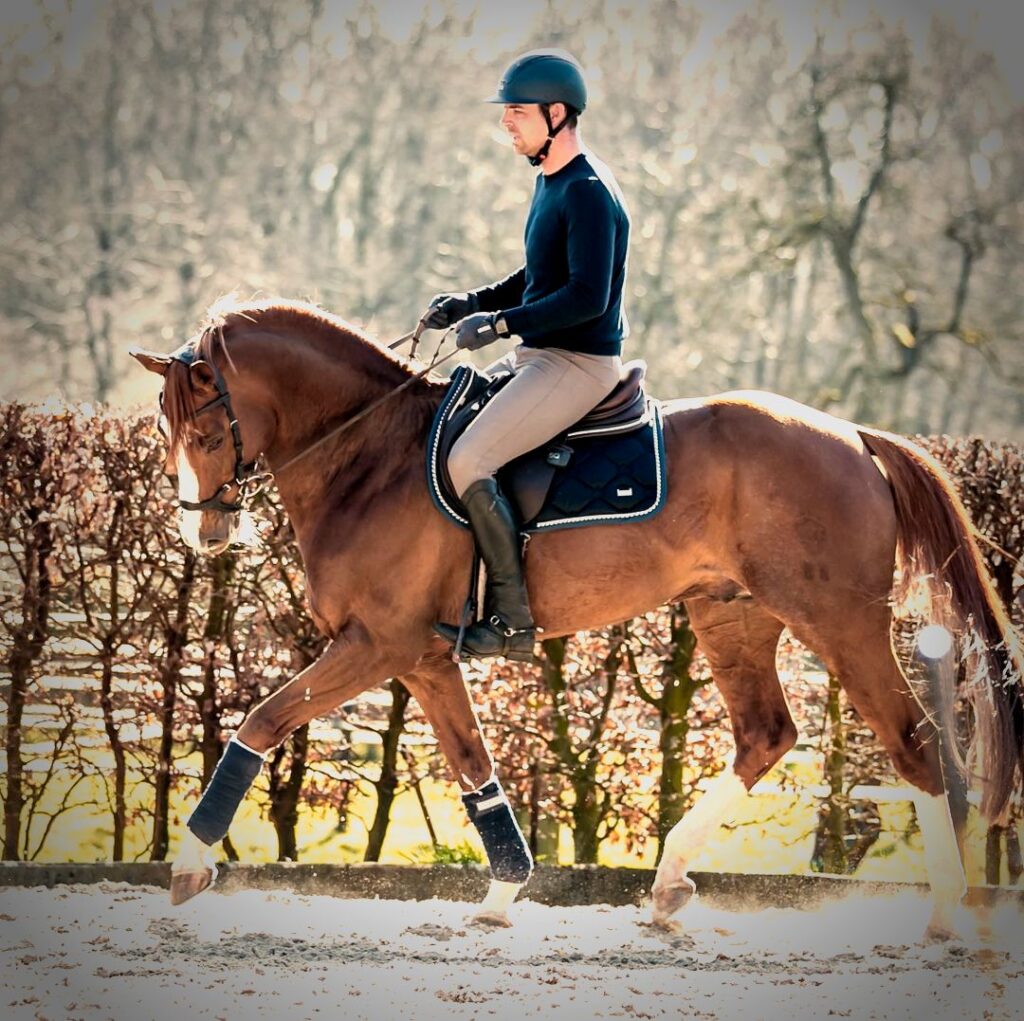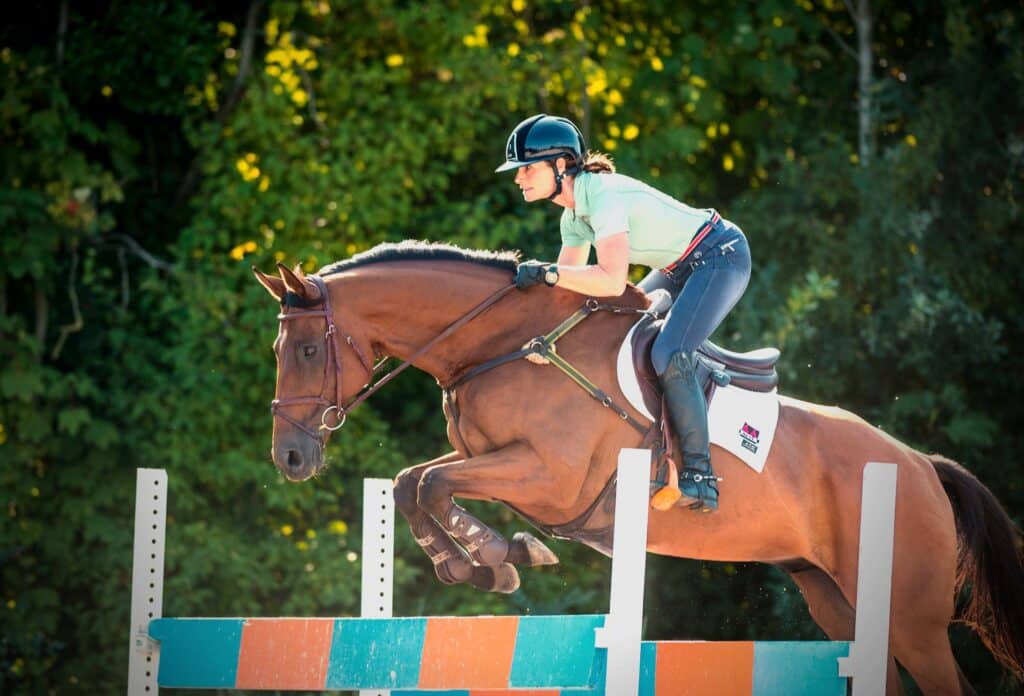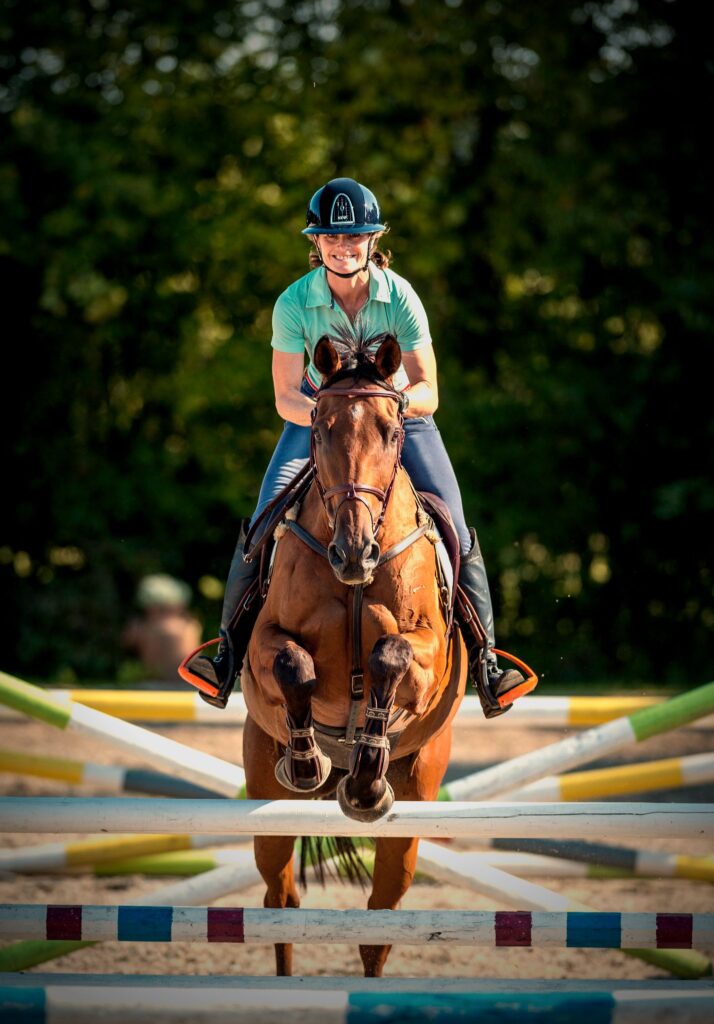Do you want to jump higher with your horse? Does your horse regularly tap the rails of the jumps and do you get penalty points? Your horse’s jumping ability depends on a number of things. For example, the construction of the jump as well as size play an important role. This you cannot change, unfortunately. What you can improve is the jumping technique of your horse. With these 5 tips you can make sure that your horse jumps over higher jumps more easily!
The more power, the easier and higher you horse will jump
Your horse needs a lot of capacity for a powerful take-off before the jump. A horse with a lot of scope has less difficulty with a higher obstacle. A horse that naturally has less scope will have more difficulty with the height of the jump. Sounds logical, right? Not every horse will be the best jumper, but luckily you can train your horse to jump higher and better.
Tip 1: Strengthen your horse’s hindquarters
By strengthening your horse’s hindquarters, you improve his ability. You can train this through dressage with a number of stimulating exercises:
- Ride many transitions. From walk to trot and back again, along the long side of the arena and as quickly as possible in a series. Curious how your horse develops its impulsion in walk and trot? Measure and analyze this accurately with a gait analysis app. This way you can be sure that you train in a balanced way and that your horse puts its hindquarters well under its body.
- Practice trotting or cantering with ground poles. Your horse must lift his legs well and you can strengthen his hindquarters this way.
- Once you’ve mastered this, you can alternate with riding shoulder-in. You train the inside hind leg of your horse, which becomes stronger as a result of this training.
- Also practice going rein backs. Your horse learns to carry his weight on the hindquarters in a new way.
Tip 2: Develop a good canter to improve riding lines in a horse jumping course
With a good, rhythmic canter, the chance is greater that your horse will take off well for the jumps. Are you often just not ready for the jump? Do you often drop off too early or are you just too tight? If your horse has a short canter, he will have more trouble getting the distance in a triple-combination jump series. In a course of four or more canter jumps, it is easier as a rider to choose to make a canter jump more or less. If your horse has the capacity and build to extend his canter, this will help you ride the lines in a course better. In addition, as a rider it is easier to vary with small and larger canter jumps if necessary. Keep up with the rhythm of the gallop by using the Equestic SaddleClip so you can get more consistent.
Practice this with ground poles. Alternate the number of canter jumps and challenge your horse to build a bigger stride. With ground poles you can choose the distance between the poles in such a way that your horse has to extend his canter. Especially if you start at a normal distance of about three meters and gradually increase this to, for example, 3.5 meters. You can also put the poles in a circle, for example at 3, 6, 9 and 12 o’clock. A nice advantage is that when you ride exactly over the middle of the poles, your circles are also nicely round.
Tip 3: Ensure the correct distance to and between jumps
A smooth high jump is left up or falls by estimating the correct distance to the obstacle. Did you know that the distance from the take-off to the jump is often equal to the height of the obstacle? The higher the jump, the earlier the take-off. Of course it also depends on which jump you choose. Practice in the beginning with a larger jump. That is the easiest approach.
To prepare the take-off for a jump, it is useful to place a ground pole three canter jumps in front of the obstacle itself. From the pole, you then have two more canter jumps to the obstacle. The third canter obstacle is the jump itself. With several obstacles, it is important to know the distances between them so that you always come out well and give you and your horse a great shot for the exercise.
Assume the following distances between obstacles:
- 7 meters ➝ 1 canter jump between 2 obstacles
- 10 to 10.5 meters ➝ 2 canter jumps
- 14 meters ➝ 3 canter jumps
- 17 to 17.5 meters ➝ 4 canter jumps
- 20 to 20.5 meters ➝ 5 canter jumps
Please note: these distances depend on the size of your horse or pony. So, it may well be that you need an extra gallop with your pony.
Count the canter jumps so that you get into the rhythm and get a better feel for your horse’s canter jump. In a course, your horse often gallops more forward and the distances between the obstacles are somewhat greater. By doing it more often, you will master the distances more and more. Gain insight into how your horse is progressing? Use a horse training app to track the pace of the canter and the power of the push-off. This way you know if your feeling is right and you can adjust where necessary!
Tip 4: Train your eye and posture when you are horse jumping
Be aware that your horse is always dependent on you as a rider. Develop your eye for the jump with in-outings. Here you train your horse to drop off immediately after landing. Make a line of 4 or 5 obstacles 60 centimeters high in a row with about 3 meters between them (the size of your horse’s canter jump). Keep your horse straight and forward. Look straight ahead and make sure to jump over the middle of the hurdles. Keep repeating this exercise. In this way you can estimate better and earlier whether you should widen slightly before the jump (increase the canter jump) or hold back (shorten the canter jump).
Also think about your own balanced and relaxed posture before, during and after the jump. Give your horse enough freedom of movement with the illuminated seat and limit with the same amount of pressure on your calves and reins. Distribute your weight evenly over your stirrups and absorb each canter jump by bouncing slightly at your ankles.
Tip 5: Build up horse jumping slowly and gradually
Whether you’re training your horse’s hindquarters or practicing widening the canter; don’t make it too difficult and build it up slowly. Make sure your horse stays relaxed and confident over the jump. Build up your training slowly and gradually and possibly make a training schedule so that you get a few centimeters higher each time. 🙂
If you train your horse to jump higher, you naturally want to do this in a responsible way. Measure and analyze your horse’s every move with the SaddleClip. This way you know how your horse is developing and whether he is strong and symmetrical enough for a challenging course. Have fun training! Want to know more? Read how you can improve your training with the training sensor.









